As an Amazon Associate I earn from qualifying purchases.
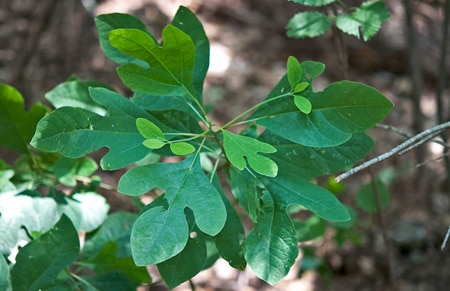
Sassafras. The aromatic bark, leaves and roots of this little tree were believed to be the first plant exported from North America to Europe, back in the late 1500s. All parts of this little tree make for delicious — and different — teas, sweets and other confections, and sassafras commanded exorbitant prices in Europe… until everyone started drinking sassafras tea to cure their syphilis. Soon no one wanted to be seen sipping their syphilis cure in public, and the sassafras trade withered.
More recently, sassafras has been getting a bad rap by the folks at the USDA, who say that the active component of sassafras, safrole, is a “known carcinogen.” Why? They gave tons of pure safrole to rats and the rats got cancer. Later researchers noted that, like the whole saccharine scare in the late 1970s, safrole seems to cause cancer in rats — but not people.
Still, many people still think that sipping sassafras tea or eating sassafras ice cream will doom you to a date with your oncologist. Just know that there are many times more “known carcinogens” in a bottle of beer than there are in any homemade sassafras product you might make. By one calculation, you’d need to drink 24 gallons of sassafras root beer a day for an extended time to get the amount of safrole fed to those rats. And if you drank that much soda, you’d have lots of other problems to deal with…
I collect sassafras on Cape Ann, where my family lives. It’s easy to spot the telltale mitten leaves of the tree. Sassafras is unmistakable: It is a spindly, shrubby tree that lives beneath larger trees. Its upper bark is green, and the leaves come in three varieties, often on the same branch — a mitten, a three-lobed leaf, and a simple spear-shaped leaf.

The way you collect sassafras is to pull seedlings right out of the ground. I know, it sounds destructive, but it isn’t. Sassafras grows in clumps, and the parent tree sends out suckers under the ground, which then become seedlings; it’s a lot like mulberry. You find a clump — look for at least 8 to 10 treelings scattered about — go to one about 2 or 3 feet tall, grasp the very base of the tree and yank it straight up. You should come away with the seedling and about 10 inches’ worth of the root.
You did not get all of the root, you know, and this is a good thing. It will regrow later. So what seems a little wanton is actually good for the sassafras cluster — it lets the surrounding seedlings grow with less competition.
All parts of this tree are useful. Notice I did not say “edible,” because the leaves are the only part you actually eat. You know them as filé powder, and without sassafras leaves gumbo just isn’t gumbo.
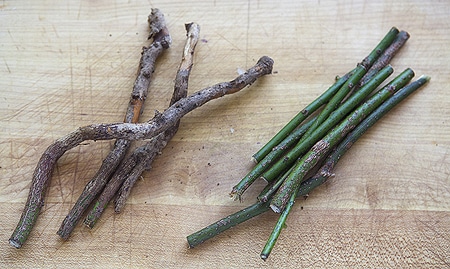
Roots on the left, twigs on the right. What’s the difference? They make very different teas. The twigs have a lemony-floral flavor and aroma that one author has compared to Froot Loop cereal — not exactly a selling point in my book, but they are lovely. The roots, however, are the “root” in root beer.
I am not a tea drinker. Coffee is my breakfast drink of choice. So I was not about to switch for sassafras. But I do like using flavored syrups from wild ingredients; I recently made a delicious fir tip syrup from the young tips of a Douglas fir tree. I then use these syrups to glaze meats, make homemade sodas, sorbets or ice creams. Sassafras is a prime candidate for this treatment.
To make the twig syrup, you peel back the green bark a bit to expose it — the bark is what has most of the flavor — then simmered the twigs in hot water. The brew quickly turns a pretty amber, a little like cola. Let it steep overnight and then strain it through cheesecloth and mix it 1:1 with sugar to make a simple syrup. It is outstanding. I mean, really outstanding. Think root beer with a lot of lemon in it.
To make an authentic root beer syrup, the first thing you need to do it chop the sassafras roots.
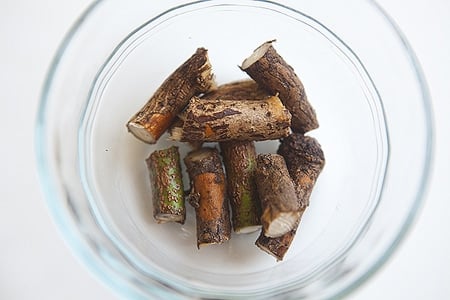
But root beer is not just sassafras, it is a concoction of many things. My recipe is heavy on the sassafras roots, plus some burdock root, molasses for color, one clove, a star anise, some coriander seed and one drop of wintergreen extract. it really does taste like root beer! Maybe not the root beer you get in a can now, but then that no longer has any real sassafras in it. It is warm, and zingy, and, well, deliciously rooty.
If you live near sassafras trees — and you do if you live east of the Great Plains, south of Quebec and north of Orlando — by all means make this syrup. If you don’t live there, or don’t feel like foraging, you can buy sassafras root bark online. You’ll never go back to store-bought root beer again.
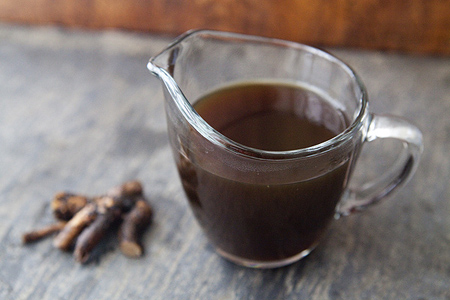
[recipe_name]Homemade Root Beer Syrup[/recipe_name]
[summary]Now I know this is not a traditional root beer. Traditional root beer is brewed with yeast, is mildly alcoholic — and can be tricky to make. This recipe will give you a root beer flavored syrup that tastes amazing, is stable in the fridge for a year, and needs only seltzer water or club soda to become a wonderful homemade root beer.
You will need some unusual ingredients to make this, notably sassafras roots. If you happen to live in the United States east of the Great Plains, you are in luck: Sassafras grows everywhere in that region. If you don’t live there, or don’t feel like foraging for your own sassafras, you can buy sassafras root bark online.
The burdock in the recipe grows all around you as a weed. Otherwise, many good supermarkets have burdock in the produce section: They are long pale, skinny roots often sold under their Japanese name “gobo.” If you absolutely cannot get your hands on burdock, skip it. The root beer will be different, but still fine.
If you can find it, get wintergreen extract. If not, use peppermint extract.
When you make your root beer, start with a tablespoon of this syrup to a pint of seltzer water. You can adjust the strength of your drink from there.[/summary]
[yield]Makes 2 quarts. [/yield]
Prep Time:[preptime time=5M] 5 minutes[/preptime]
Cook Time:[cooktime time=25M] 25 minutes[/cooktime]
- [ingredient][amount]6 cups[/amount] of [item]water[/item] [/ingredient]
- [ingredient][amount]3 ounces[/amount] of [item]sassafras roots[/item][/ingredient]
- [ingredient][amount]1 ounce[/amount] of [item]burdock root[/item][/ingredient]
- [ingredient][amount]1/4 cup[/amount] [item]molasses[/item][/ingredient]
- [ingredient][amount]1[/amount] [item]clove[/item][/ingredient]
- [ingredient][amount]1[/amount] [item]star anise[/item][/ingredient]
- [ingredient][amount]1 teaspoon[/amount] [item]coriander seeds[/item][/ingredient]
- [ingredient][amount]2 drops[/amount] [item]wintergreen extract[/item] or [item]peppermint extract[/item][/ingredient]
- [ingredient][amount]6 cups[/amount] [item]sugar[/item][/ingredient]
____________
[instructions]
- Chop the sassafras and burdock roots into small pieces, about 1/2 inch or smaller.
- Put the roots in a medium-sized heavy pot with the clove, star anise and coriander seeds and cover with the water. Cover the pot and bring it to a boil. Simmer this for 15 minutes.
- Add the molasses and simmer another 5 minutes.
- Turn off the heat and add the wintergreen or peppermint extract. Put the cover back on the tea.
- When the mixture cools, strain it though cheesecloth to remove any debris.
- Return it to the pot with an equal amount of sugar. Stir to combine. Bring it to a simmer and cook it for 5 minutes, uncovered. Pour into quart mason jars and seal. Keeps a year in the fridge.
[/instructions]

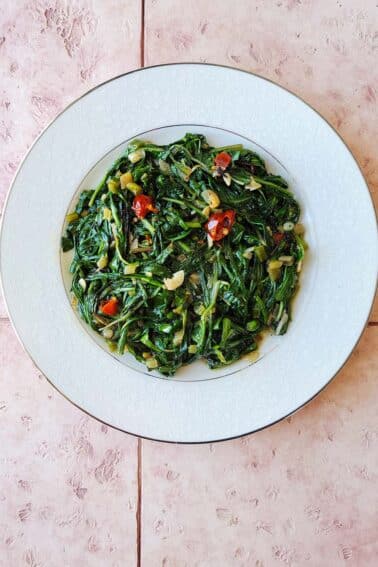
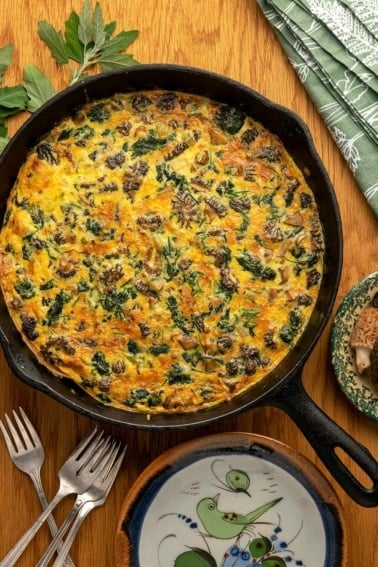
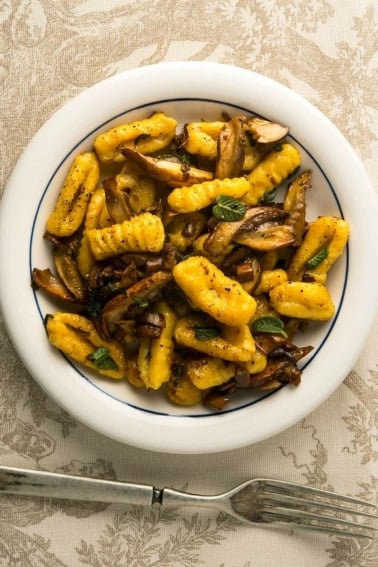
I thought root beer is made with sarsaparilla roots, I looked online and the sarsaparilla plant looks different from sassafrass. what’s the difference between the 2?
I am trying out a recipe for root beer kefir. I bought Sassafrass bark and sarsaparilla bark at my local health food store. Both barks were quite expensive and I was wondering if I can rebrew the bark? I spread the barks out thin and allowed to dry completely – considering placing in the dehydrator to ensure dryness. I know typically I can rebrew with traditional teas but was uncertain about this.
Thanks for the recipe! I had some amazing small-batch root beer recently that is only available on site at a local pub and I’m dying to recreate the experience at home.
I’m using dried sassafras and burdock. Should I use less to account for water loss?
Close, but no cigar, Hank. Try this: https://dangermencooking.blogspot.com/2013/07/root-beer-and-birch-beer.html
Love the tea. Hot or cold.
I have so many saplings that I just go yanking them out of my flower gardens. We have 3 large trees. As bad as acorn saplings! Oy Vey.
I never thought to make tea.
Milford, CT.
Thanks for this article. I’ve been perfecting my own root beer– fermenting and making the soda– but since each batch is so radically different & since I’m not using stabilizers, when a batch ferments the flavors continue to change, I’ve wondered about trying syrups. I would point folks to Mountain Rose Herbs for a good source of sassafras root. I hate yanking up a seedling so I use the already dried, organic root. I didn’t think about gathering twigs though from the trees, which won’t kill the seedling. Thanks again.
HI!
I’ve been hunting for sassafras root – being in Alberta, Canada it doesn’t exactly grow in my back yard. What area do you reside in? Know any place which would be willing to ship some my way?
Another recipe I saw substituted vanilla extract or half a vanilla bean for the wintergreen. Anyone tried it?
You can also make tea out of black-birch, but im not exactly sure how to make it :]
If you are up this way in MA to get Sassafras you should grab some wintergreen leaves and berries at the same time.. I personally like them better than spearmint and peppermint. We have tons growing around our many Sassafras trees and saplings.
I cannot wait to try this with my little kids. They love the woods and this will be a great treat for them to forage and make something they love. Thanks for the recipe! Look forward to more foraging recipes.
I have made this numerous times now and it always comes out great. Don’t rush the steeping time ( between 4 & 5). That and the winter green extract is what brings it home!
Tony: Yep. Ounces by weight.
Silly question…when list ounces, I assume that is weight, not volume…
I foraged some sassafras root on a camping trip this weekend and googled “Sassafras root beer”, which is how I found this recipe! I’ve attempted “real” root beer in the past and every time basically got a not-unpleasant-but-definitely-not-rootbeer kind of fizzy herbal tea. I knew I was looking for a kind of syrup base so I could do all sorts of things with it and this was PERFECT.
I made some adjustments with the flavor based on what I had: I omitted the coriander seed and added 4 peppercorns, 2 juniper berries, 2 allspice, 1 cinnamon stick, a small pinch of nutmeg, and 1 TB of Sarsaparilla (had it from a previous root beer attempt). I had wintergreen extract: I harvested wintergreen leaves the previous summer up in Maine and chopped them finely, and infused them into vodka for about a month and strained. It’s been sitting in my bar ever since – so I used about two tablespoons here, but only added it after the final “simmer” with the sugar.
Again, thrilled with the resulting flavor – and this makes A LOT. I filled two ball jars and two smallish flip-top bottles. Am thinking of mixing a couple cups of this with vodka and just letting it age for an awesome liqueur. But the possibilities are endless! Thank you!!
i use seasoned sassafras wood in my smoker makes out standing smoke of course best flavor
I’ve been making tea with the Boy Scouts on camping trips but I’d love to be able to do this too. Any ideas on how I might use checkerberries or checkerberry leaves instead of Wintergreen Oil?
Paula: My syrup is like maple syrup: Thicker than water, thinner than molasses. I would not add more sugar.